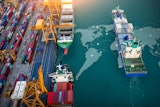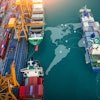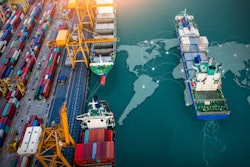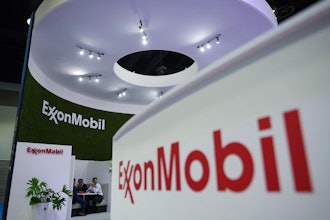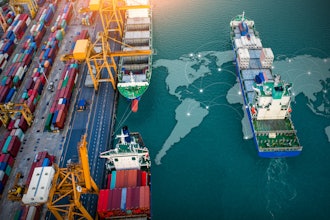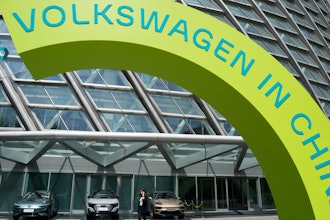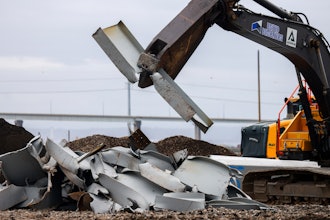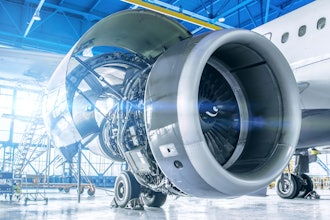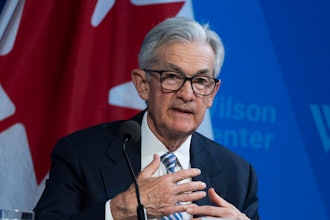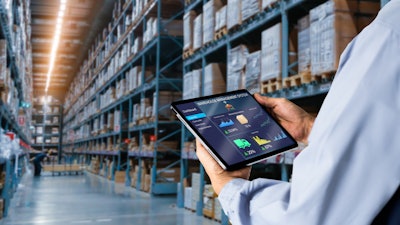
Late last year, McKinsey & Company explored the ins and outs of the supply chain by surveying industry leaders for its annual “Supply Chain Pulse” report.
According to McKinsey, the findings shed new light on shifts in how businesses are managing the flow of goods, offering a fresh perspective specific to contemporary challenges.
Among other key findings, the survey indicated the following:
- 95% reported challenges with their supply chain footprint in the last 12 months
- 50% reported their supply chains are reliant on another region and 89% plan to reduce this dependency with focus on Western Europe and Southeast Asia
- 64% regionalized their supply chains with 42% bringing production closer to where they expect to sell their goods (+25% YoY)
- 66% brought suppliers closer to their main markets (+34% YoY), driven mostly by the automotive and consumer industries, with 78% moving away from single sourcing of raw materials
IEN spoke with Knut Alicke and Vera Trautwein – two of the report’s authors – for some added perspective on the biggest takeaways from this year’s survey. Responses have been lightly edited for clarity.
IEN: Let’s talk about some of the big takeaways from this report. You said that companies are embracing resiliency strategies on a significantly larger scale. Can you tell me why you think that's happening now or if anything about that has surprised you in any way?
Knut Alicke (KA): I would say resilience has been on our agenda for the past few years. We started in 2020 right after the lockdown and resilience and risk management has been a key focus area since then. And there had been a different focus to our survey when the pandemic began in 2020. It was much more on short term; it was much more on [needing] to solve the operational problem of the day. From there, it transitioned to, ‘We need to do much more work on strategic resilience.’
One example is the nearshoring topic. When that started, everyone [said] ‘We need to nearshore.’ Then it stabilized a bit over 2022 [and] nearshoring was not such a hot top topic anymore.
Then the political tension began. And now what we see in this year's survey is that nearshoring is peaking. Speaking with other leaders in the industry, I would say most of the companies we work with or we talk to, they prepare a more nearshore footprint, and this is not something that comes overnight. It takes time to consider all the factors and slowly transition their supply chains. So the focus for our latest survey has been on risk and resilience. When we ask what the most important topic is, we see that sustainability, digital and resilience emerge as the three biggest priorities for supply chain leaders in 2024.
Vera Trautwein (VT): While the resilience methods have been top of mind [since the] COVID-19 pandemic started, many of these measures also take time to implement. That is one of the reasons we now see the actual execution level of resilience strategies rising, whereas in earlier survey editions, many of these strategies were spoken about, but not yet implemented. That is why for example directly after the COVID-19 outbreak, many companies were increasing inventory buffers, however now more and more companies are moving to nearshoring suppliers and production.
Linked to that, the inventory strategy for me was one of the surprising survey results. Right after the COVID-19 outbreak, building inventory buffers was the quick fix to increase resilience. However, with cost and capital pressures rising again, we cannot justify keeping those buffers across the portfolio. Now the big question is, what does the future of inventory management look like? Global Supply Chain Leaders are very uncertain with roughly an even one-fourth split between staying as-is, further increasing, going back to old levels or reducing even further. This will be an interesting supply chain area to watch out for in the coming years.
IEN: I think we were interested as observers just to understand whether the pandemic caused folks to pay lip service to this idea of nearshoring or reducing dependency on certain regions, but maybe that was a more permanent takeaway – just the variables are changing. Do you see that a lot of this is decoupling from China specifically? You mentioned political tensions.
KA: Yes, our findings indicate that decoupling from China and other countries in Asia are on the rise. We see a significant increase in manufacturers looking at Mexico for example, where our colleagues now published a monthly report on foreign direct investment (which went up significantly this year). It's very important that we distinguish decoupling – or, to what extent do we want to decouple -- from everything that we produce in China. China is still a huge market and that's why companies would not just leave China. They would still be in China, but they would build another source to supply the rest of the world and the rest of Asia. If you look at global flows today, it's very clear that globalization will continue to be a reality. It is the shape of the global flows that has changed: while trade routes have decoupled and regionalized, globalization will remain.
But it will be more complex. That makes it even more important to have your supplies under control. If today you have just one plant to manage, in future you may two plants in different locations. This is where we will see the world developing in the next 10 years.
One last comment to this point would be on the speed that I mentioned earlier. It's clear that you cannot set up an industrial infrastructure overnight. You cannot build the capabilities. You cannot build all the supplier landscape. But even if you cannot relocate a part of the plant, that does not mean that the flows are going down to zero. That just means that the finished products, say, are not flowing from one region to another, but the components flow from one region to another and then are put into a finished product. So, to the extent that the components would also be produced nearby, that will take another couple of years for companies to achieve.
IEN: The other thing I wanted to touch on quickly is talent. Obviously, talent appears to still be one of the major issues impacting supply chain leaders. Do you feel, in surveying this group, that they're seeing this again as a permanent shift in demographics? And if so, how are they shoring up resources? How are they tackling that problem of talent?
KA: We see that clearly there is a gap in talent. If you think about what people say that they need to do, they need to be more agile in planning, they need to have visibility, etc. All of this requires talent. And this talent, a lot of companies simply don't have. What they did over the years is to source externally and to further develop internally, which remains ongoing. Thus, the race for talent is still underway. In our survey, we clearly saw that there's a significant gap of what talent companies would like to have and where they are.
You could say that ‘Generative AI would kind of help this because we don't need to have any human-powered planner,’ but that's not entirely true because you still need to have that strategic touchpoint. A tool like Gen AI can help you to be more efficient but does not entirely help solve more complex, contextual decisions.
IEN: In reviewing the results of this survey, was everything in line with your expectations? Was there anything that really surprised you about how the supply chain professionals were answering these questions?
KA: That's always a tricky question. One result I found a bit shocking was when we asked the supply chain professionals about the maturity of their bosses on the Boards of their organizations. I had expected with all the disruptions and everything over the last three years, where supply has been really, really in focus that the Board would understand more. And what we got out is that we have something like, let's say, 60% general awareness and only 20% deep understanding. This was a bigger disconnect than what we had anticipated. So now imagine a Board that needs to decide to implement measures to make your supply chain more resilient and that might require a considerable investment. People invest in IT tools to manage more complex network and, yet they don't understand it. And that is what we often see. What we often talk to supply chain leaders about is that it may not be helpful to just take a quarter-end view, because then you may not be ready for the next disruption – which may be a whole year away.
We advise leaders to view it as taking out supply chain insurance. You would never ask, ‘hey, do I need the car insurance?’ Because if there's an accident, you are super happy to have that, but you don't want to have an accident just to make sure that it makes sense to have insurance. And this is the same for the supply chain. We’re always preparing for the potential disruptions of the future.
